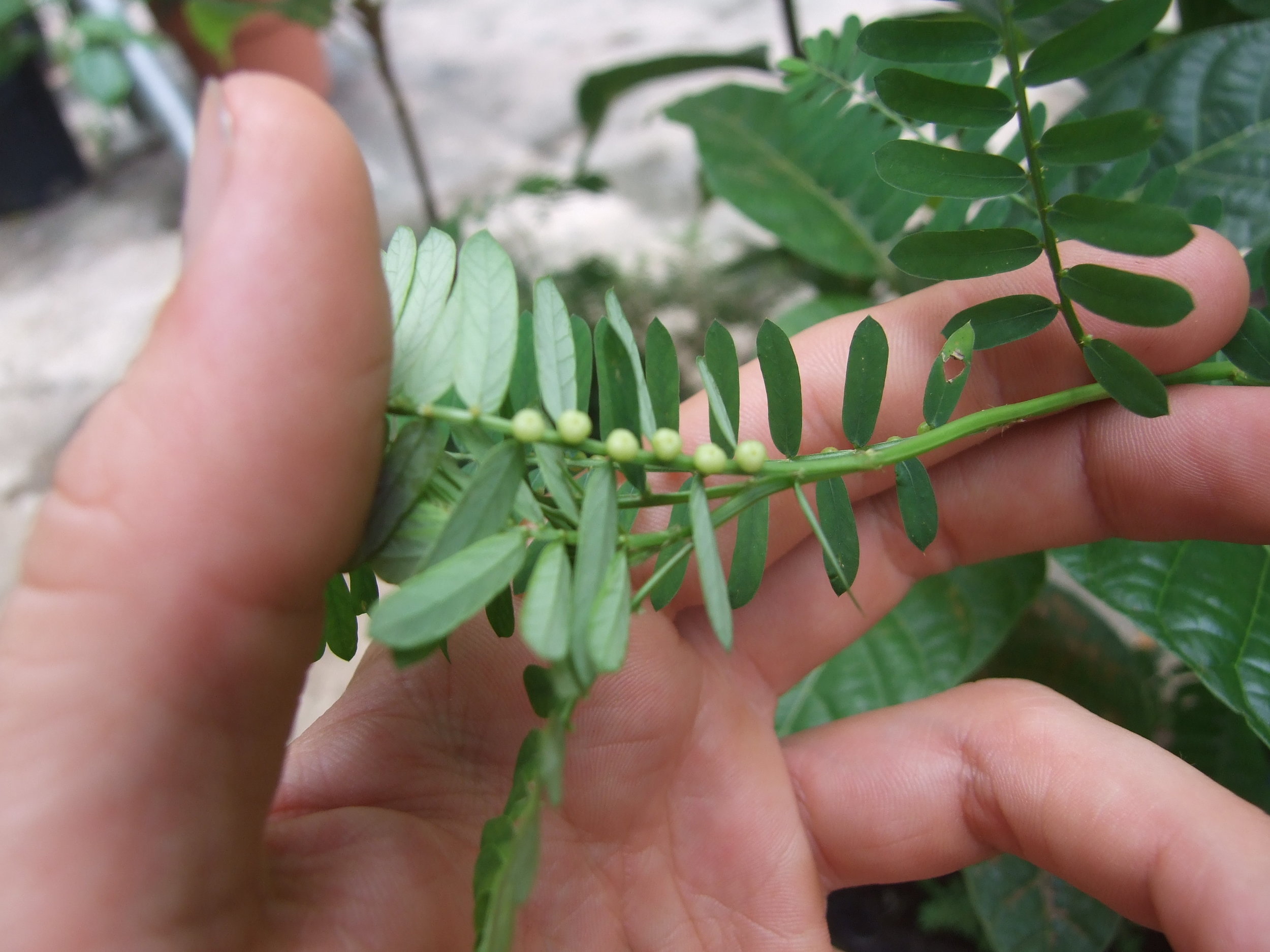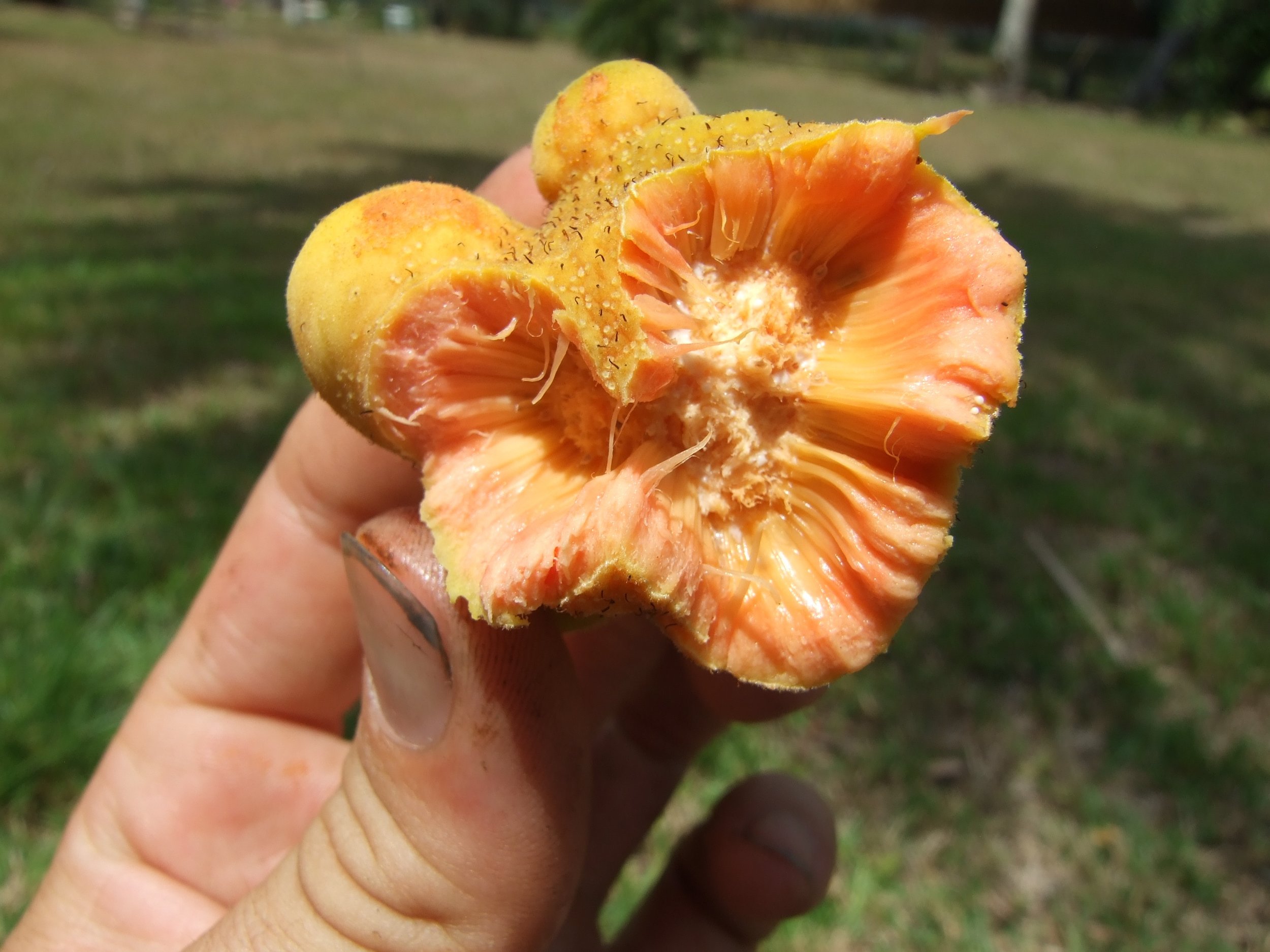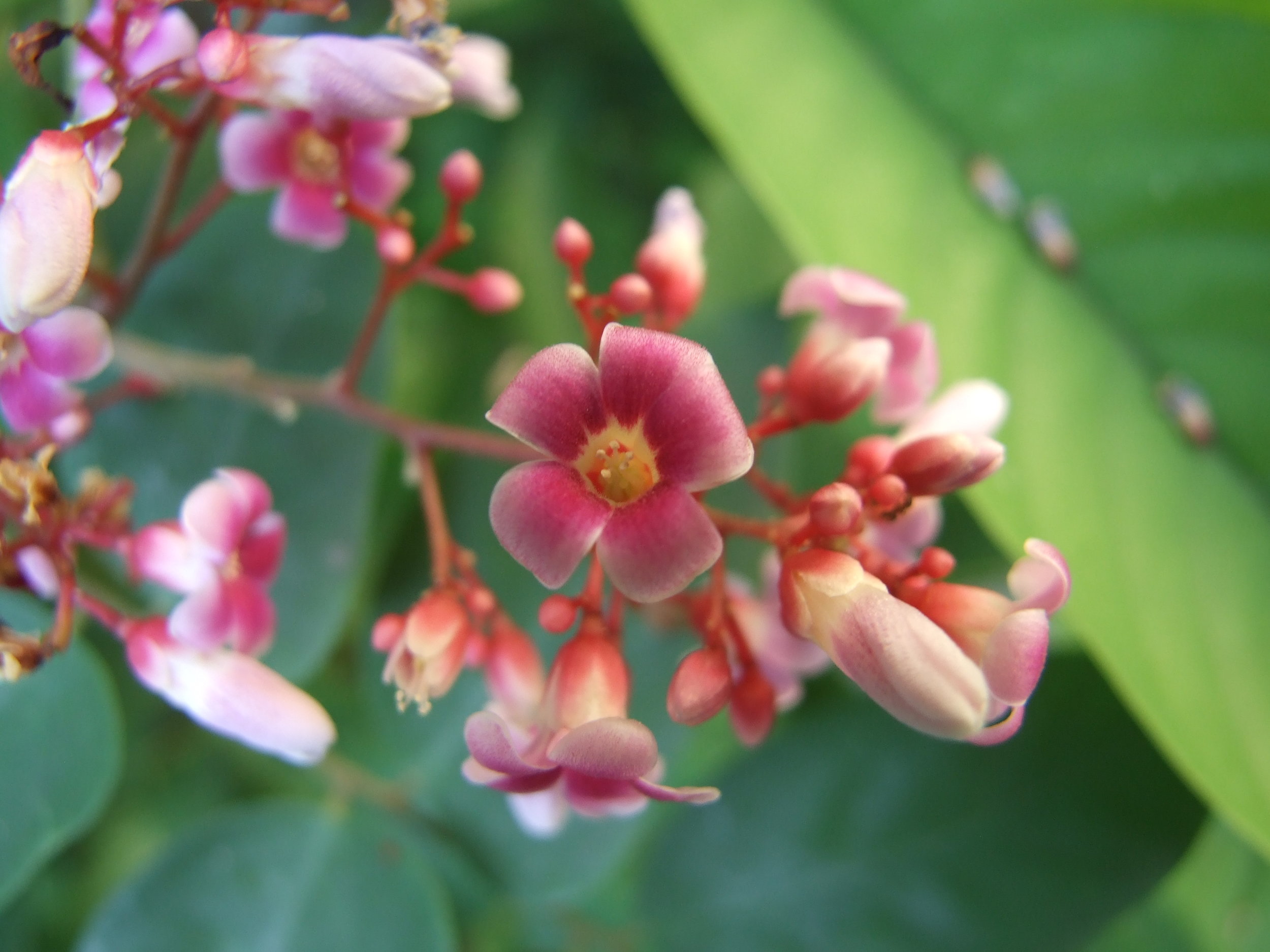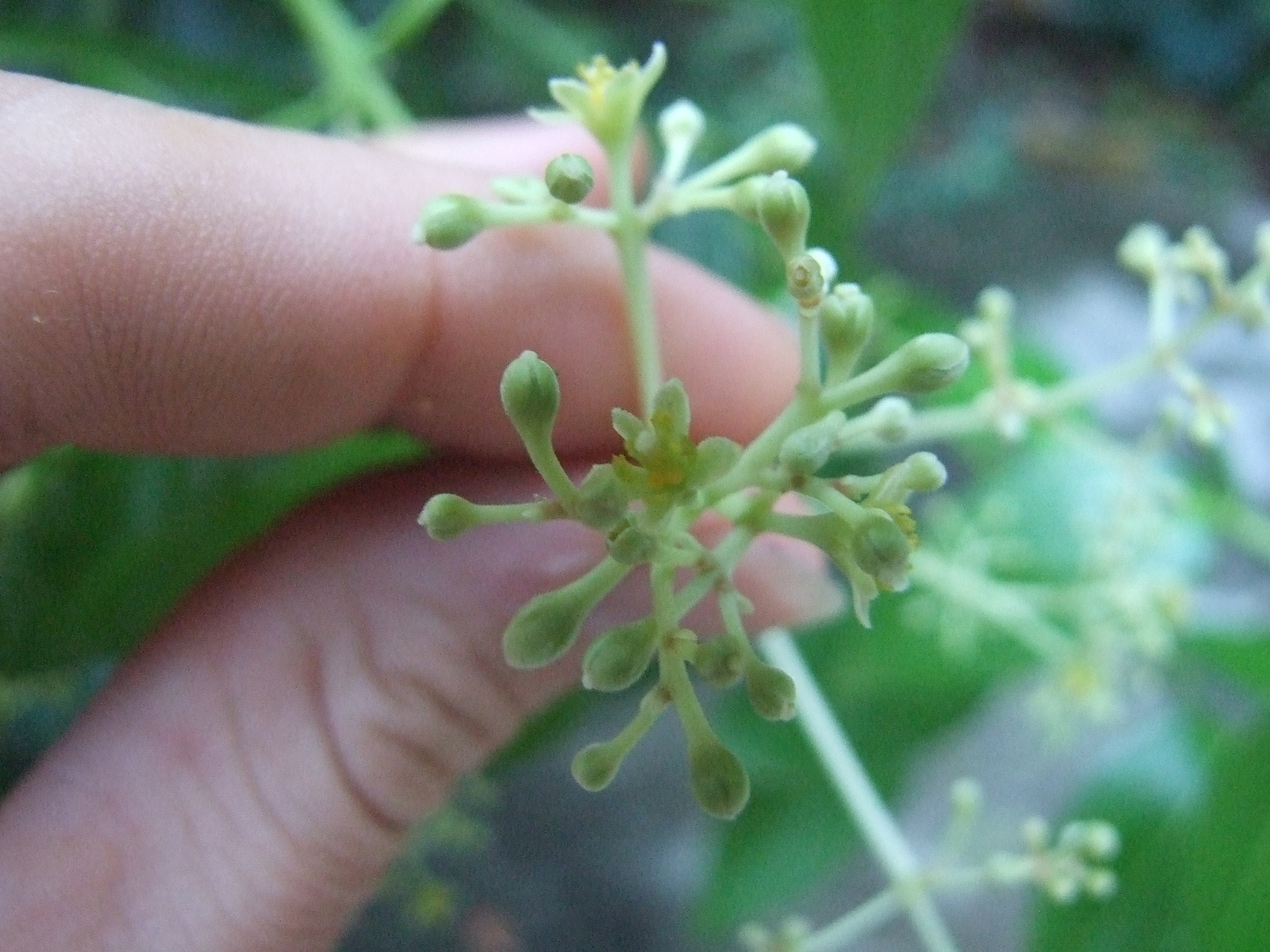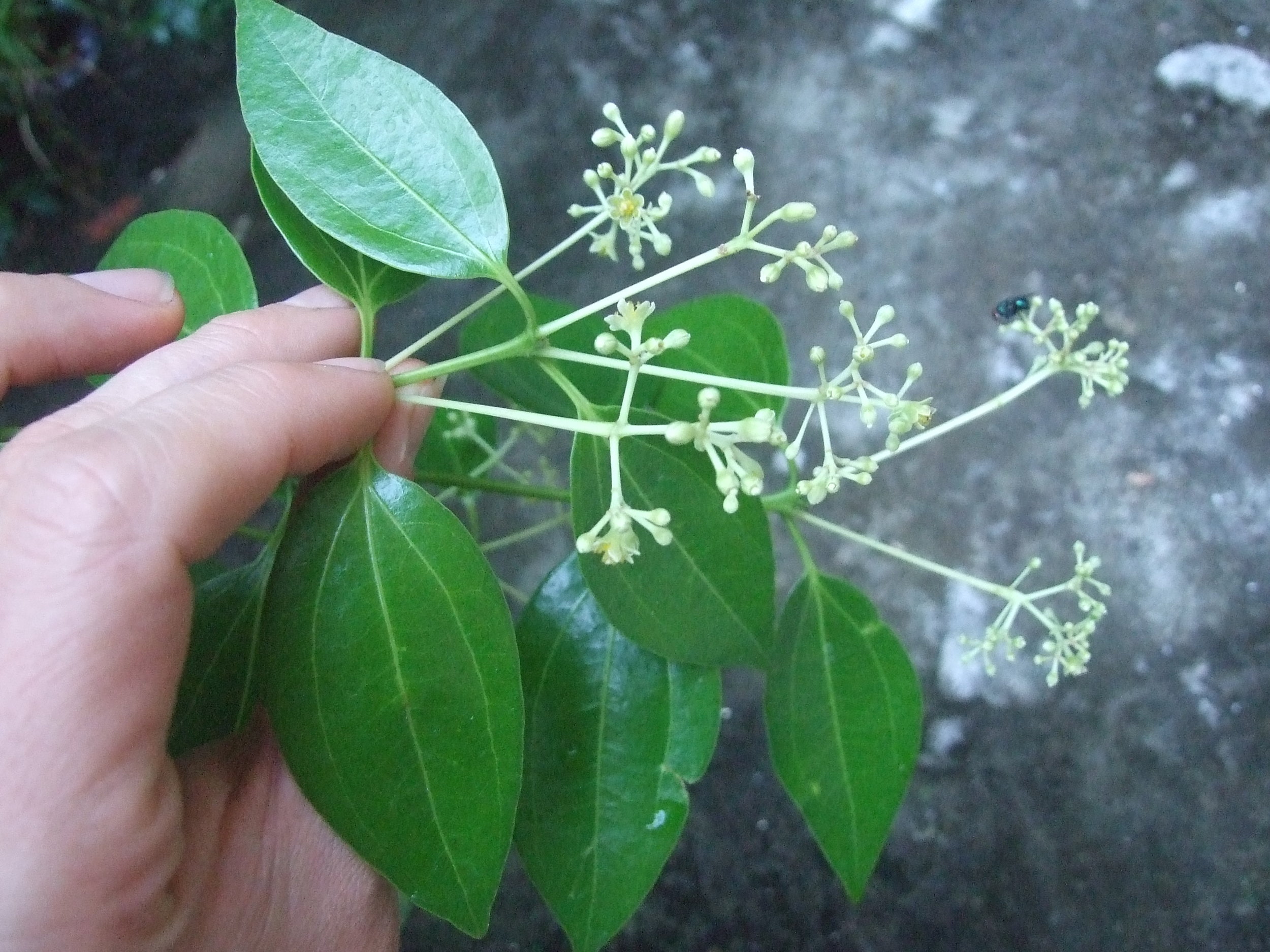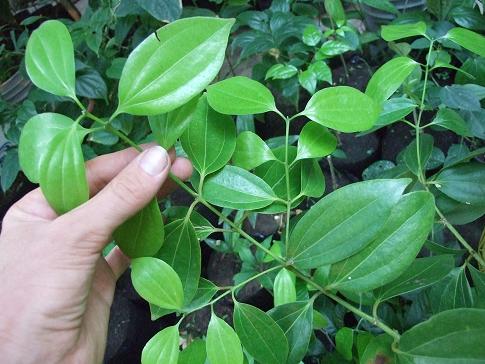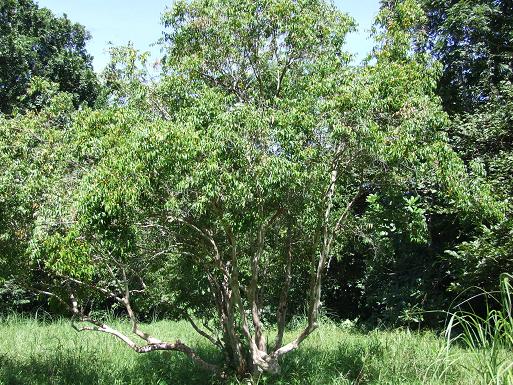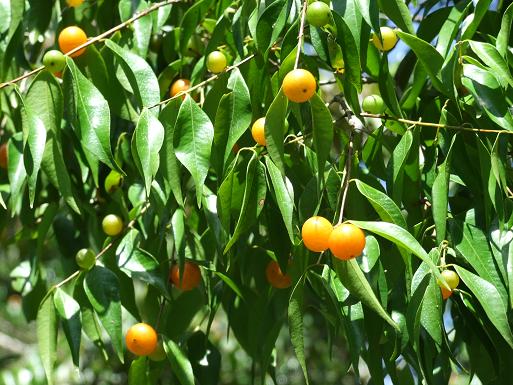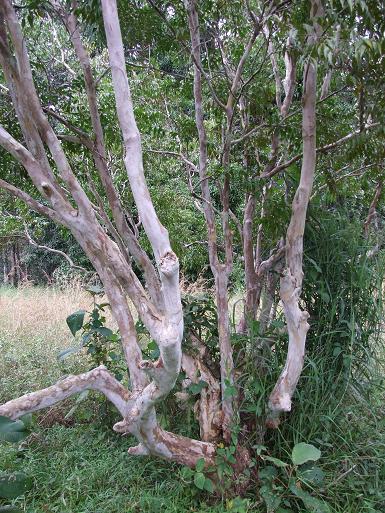This is one of many plants found growing wild all around Panama City which are of particular interest to me. Many people assume that plants such as these are useless "weeds" based purely on the fact that they are prolific and do not rely on human cultivation in order to propagate. As it turns out (and not surprisingly), many of these plants have a wide range of medicinal properties and were probably much more commonly used in the past for such attributes. Stonebreaker is a small, low growing herb that volunteers itself at the base of potted plants in my nurseries, and basically in any other area where soil has been disturbed or remains bare. The plant is called Stonebreaker because it is used to remove kidney stones and gall stones. Additionally it is used against viruses, bacteria, fever, and as a diuretic. It is also used as a pain reliever and to treat stomachache, constipation, diabetes, dysentery, flu, venereal problems, jaundice, malaria, and tumors.
Bignoniaceae, Mansoa alliacea, Wild Garlic, Ajo Sacha
Ajo Sacha is a climbing vine that has a distinctive garlic-like odor when crushed or cut. The young leaves and tendrils of Ajo Sacha taste like garlic and can be used, minced, in a variety of foods, raw or cooked. The bark of the wild garlic vine is mixed with water and used as a path for people with asthma or who smoke excessively. Bark raspings, taken orally with water or with cane rum, are used to treat asthma and arthritis, respectively. The most common form of usage seems to be an infusion of parts of the plant in water, which is used to bathe oneself and treat or protect against evil spirits, fever, influenza, and aches and pains, as well as nervousness, fatigue, and cramps.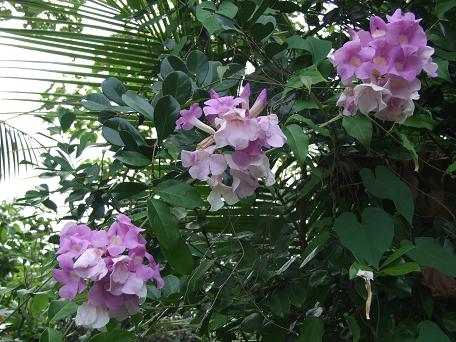
Passifloraceae, Jamaican lilikoi.
I'm growing this on my balcony in Casco Viejo. The flowers just opened up a few days ago, with an incredible scent. I'm hand pollinating them for better fruit set. I think this one has a lot of potential in balcony and rooftop trellis plantings. The fruit is orange and both looks and tastes like a cross between P. edulis and granadilla.
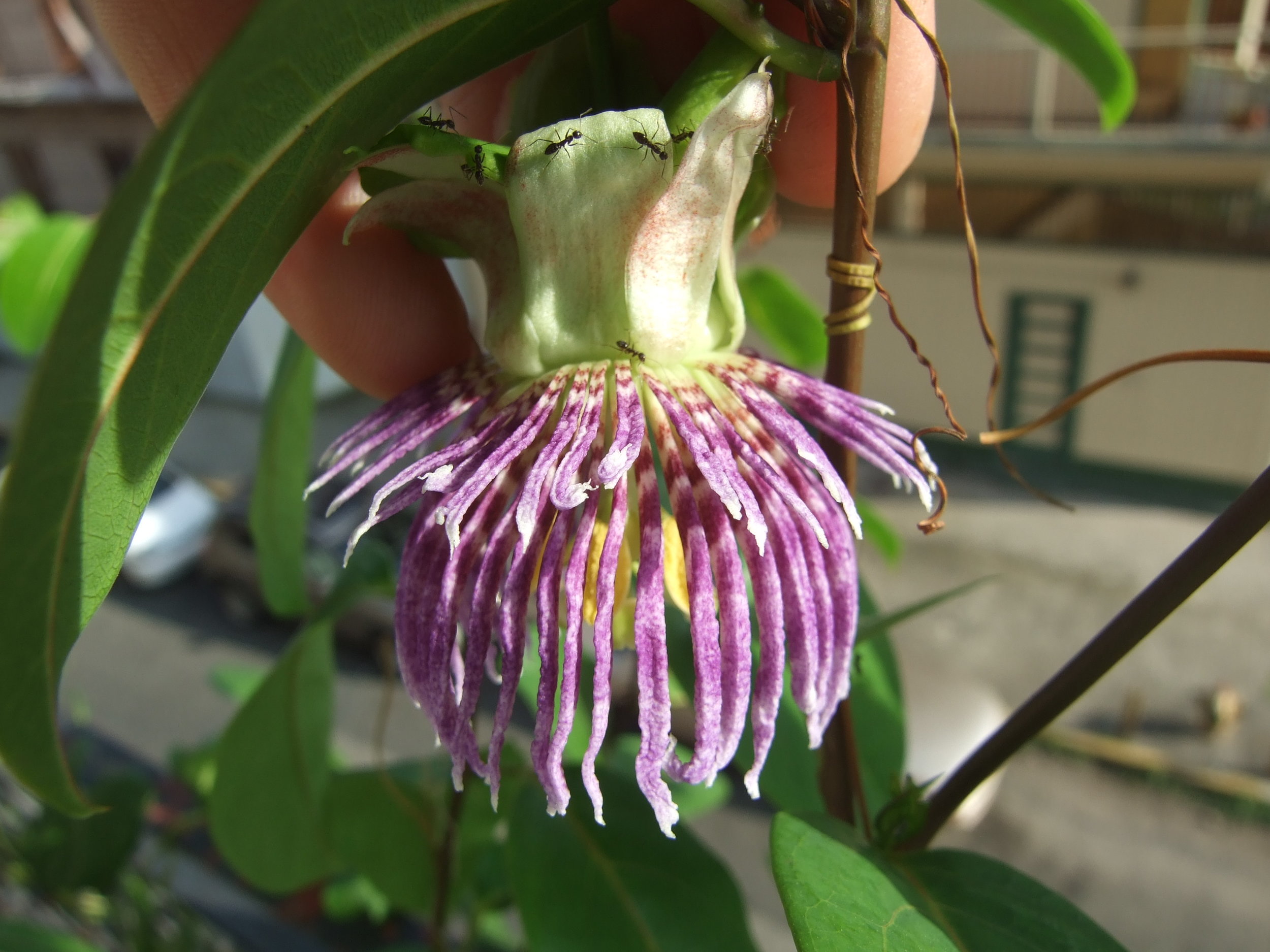
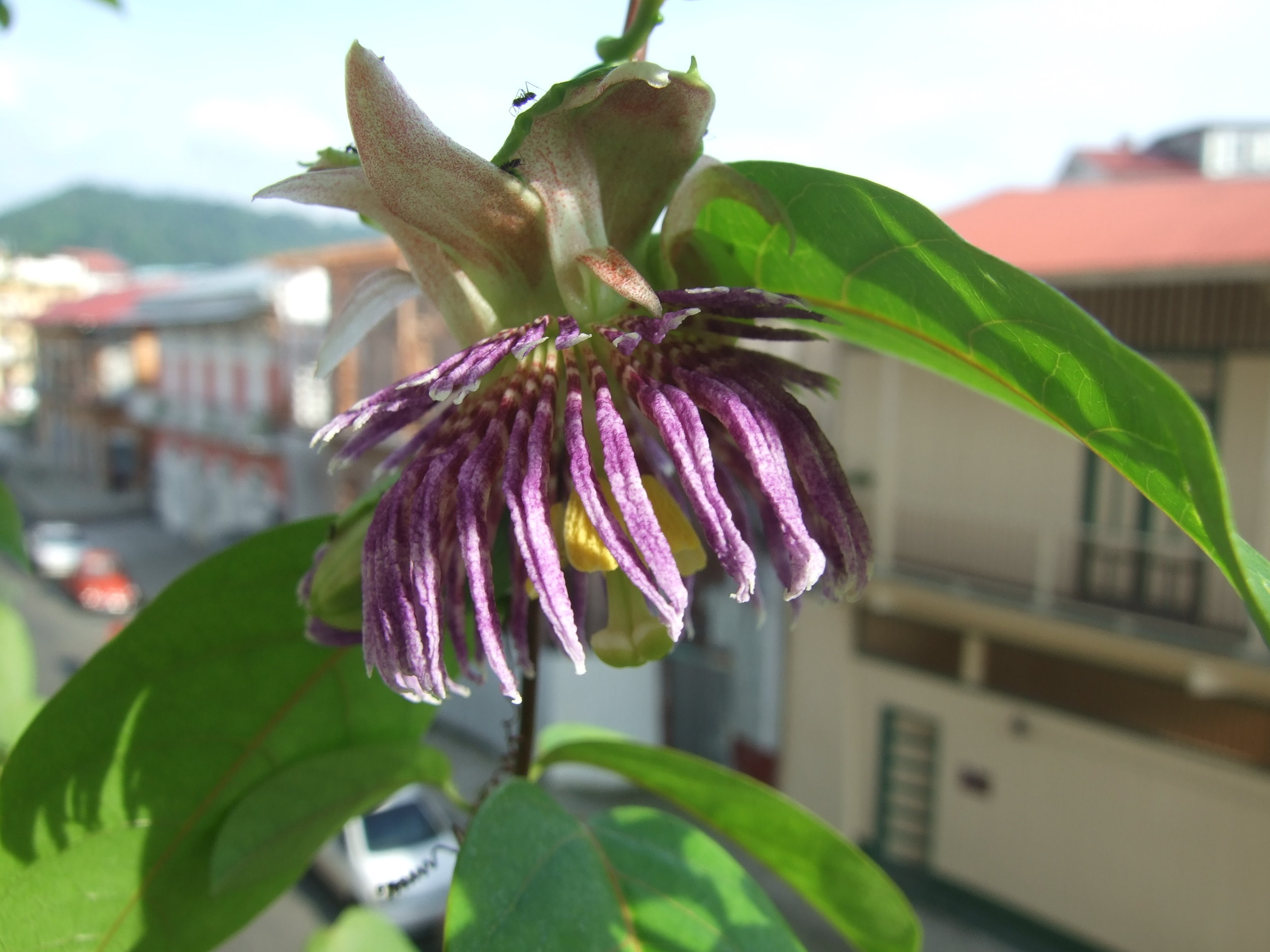
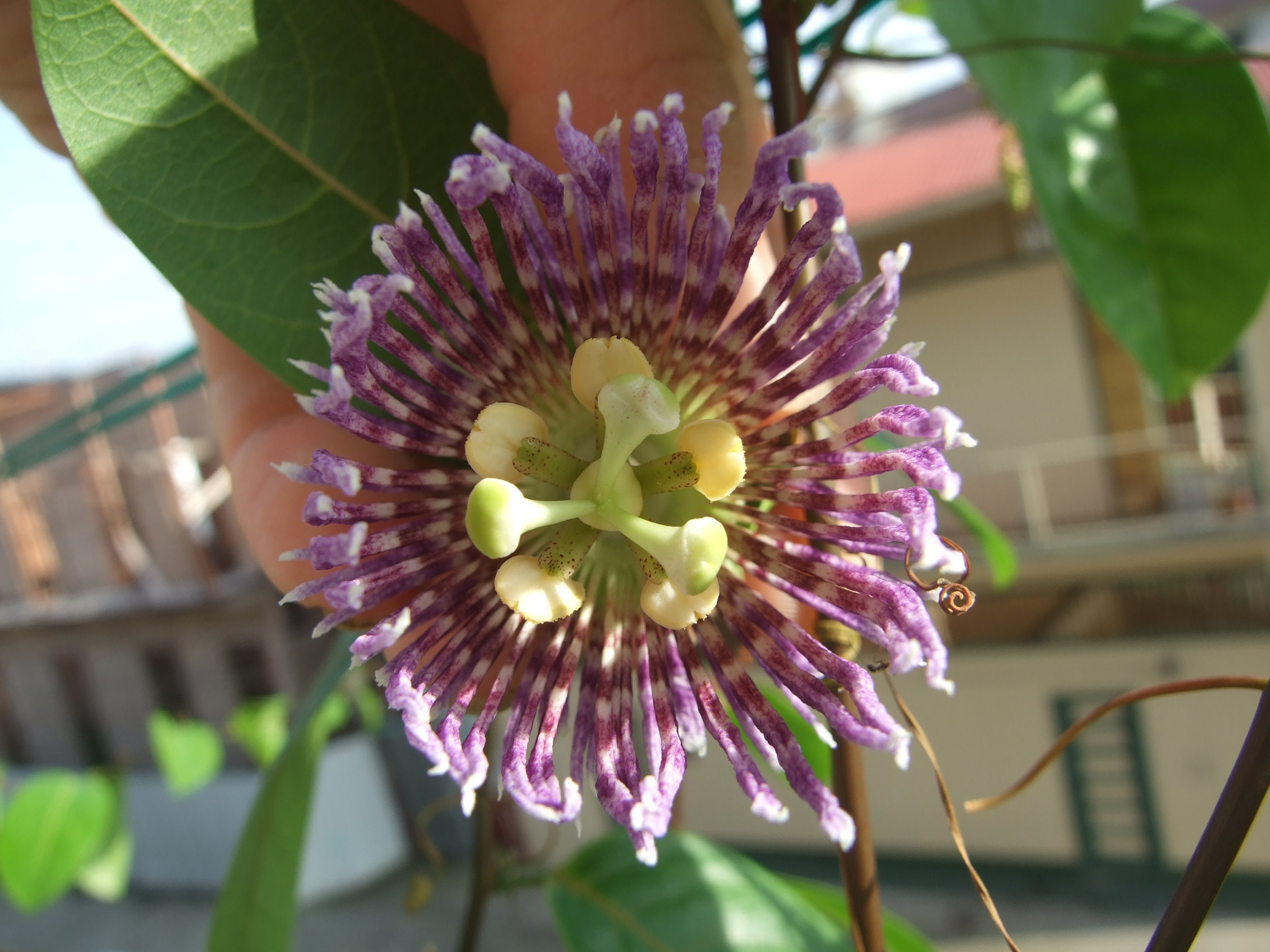
Euterpe oleraceae, Acai
Plectranthus amboinicus, Lamiaceae, Indian borage, Country borage, French thyme
I usually refer to this one as succulent oregano, because it smells like oregano and has fleshy stems and leaves. Filipinos call it oregano. It is called broad-leaf thyme in the West Indies. Although it can be used for culinary purposes in the same applications as thyme, oregano, or sage, in many areas P. amboinicus is more commonly employed as a medicine - as an aid in difficult digestion, for menstrual pains, rheumatic pains, and to aid flu symptoms. The aromatic leaves are used in india as a traditional cough medicine. In parts of Indonesia nursing mothers consume the leaves to increase milk flow. The essential oils extracted form the leaves are used in shampoos. I have read reports that the plant can be smoked like cannabis.
Moraceae, Artocarpus lakoocha, Monkey jack, Lakoocha, Emerald Jack, Pachoo Phanas (Bangalore), Badahar (Guyana), Selengking (Borneo)
This is the ripe orange bumpy fruit. I was unable to identify it for a long time, just recently found it in a book called Fruits and Cultivated Exotics that I found at Fairchild Botanical Garden. The taste and texture are very interesting. Taste is tangy and slightly citrus-like. The texture is like that of unripe jackfruit only finer fibers, as a visitor to the site pointed out (see comments), similar to kiwi. I germinated a bunch of seed about five months ago. The small trees are just now about to surpass me in height. Supposedly the tree yields an excellent hardwood, said to be superior to Teak, useful for toolhandles and construction both above and below water. The trees I saw were not cultivated as a hardwood.
This photo was taken a month after transplanting the germinated seedlings, they are growing quickly. I'll take some up-to-date photos to upload today.
Meliaceae, Azadirachta indica, Neem
 Well known in its native North-ease India and Burma Neem is a fast growing, medium size tree, mature trees reach heights of 20 m or so.
Well known in its native North-ease India and Burma Neem is a fast growing, medium size tree, mature trees reach heights of 20 m or so.
Neem is widely considered to be one of the most useful of all cultivated trees. The uses are diverse and extensive. Neem is very drought tolerant and is grow extensively in arid and semi arid regions of tropical Africa.
Roots grow deep and wide, the tree does not stand waterlogging, leaves will ceas to grow, turn yellow, and eventually the roots will rot.
The wood is of very high quality, red in color, similar to that of Mahogany. Also notable is that it is resistant to rot, due to its fungicidal properties. The wood is also used to produce a carbon of superior quality. The tree grows rapidly and regenerates easily after heavy pruning.
Neem is widely acclaimed for its insecticidal and fungicidal properties and has been used as such for thousands of years. Neem oil is, perhaps, the most effective natural product to combat such plagues. The oil is also used in the fabrication of soaps, lubrication oils, toothpaste and other cosmetic applications. Pure neem oil is said to be 98% effective as a spermicide when applied topically. The tree is also an excellent pioneer reclamation species to plant in exhausted soils. It is extremely drought tolerant.
Despite the fact that Neem is toxic to fungus and insects, it can be used as a highly nutritious and productive livestock forage crop.
In East Africa Neem is used as firewood, charcoal, timber, furniture, poles, utensils (pestals and mortars), medicine (leaves, bark, roots, fruit), fodder (goats eat leaves and oil-seed cake), bee forage, shade, ornamental, soil improvement, windbreak, veterinary medicine, oil (seed), a powerful antifeedant (azadirachtin from seed and leaves), soap manufacture.
For in-depth information I would suggest starting with The Neem Foundation, which can be found on the internet. Here's a link to the Kenya Neem Foundation.
Oxalidaceae, Averrhoa carambola, grafted Carambola (starfruit) flowers and young fruit
The tree is small, usually no larger then 12 m high. We grow grafted varieties in Panama that begin to bear fruit when just a few feet tall. Grafted trees can be managed at four meters and, in favorable conditions, bear so much fruit the branches will break if they aren’t harvested.
The fruit, as the name would suggest, is shaped like a star. There are multiple varieties of Starfruit, both sweet and sour. Sweet varieties tend to be lighter in color and smaller, about five inches long and three inches wide. Sour varieties are larger and more orange in color.
Starfruit is especially rich in Vitamins A, B, C, phosphorus and calcium. The vitamin C content is comparable to that of an orange. Each fruit contains between 8 – 10 % sugar.
In addition to the fruit, both the flower and leaf are edible. I have two Taiwanese varieties. Very compact, heavily bearing trees. I'm trying them on balconies in large pots.
Lauraceae, Cinnamomum verum (zeylanicum), Cinnamon, Canela
Myrciaria floribunda - Rumberry, Guavaberry
M. floribunda is a very slow growing species, rarely found cultivated in its region of origin, although wild trees are typically left in pastures that have been cleared of their vegetation.
I know of a single tree and have harvested fruit once. Bears heavily.
In my experience the small, hard seeds can take a while to germinate. After months of waiting for germination I kind of lost track of them. Eventually I got a few sprouts. A light scarification might prove beneficial in expediting the process. Next season i'll germinate a few dozen, as this is a very uncommon in interesting tree.

